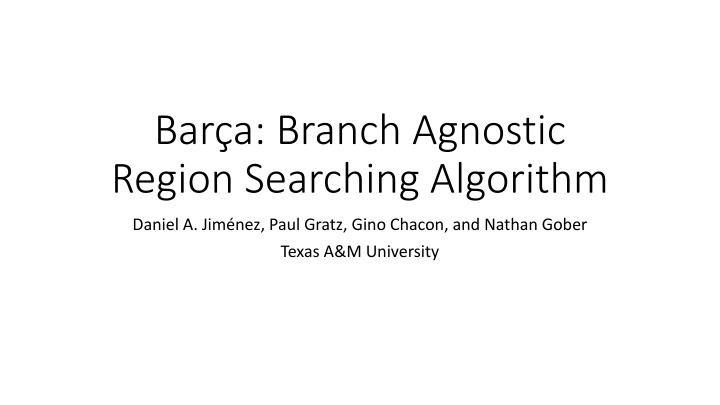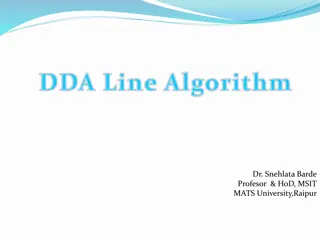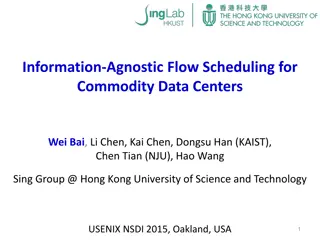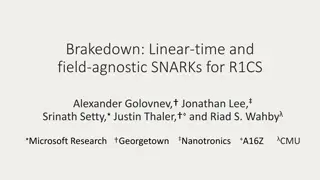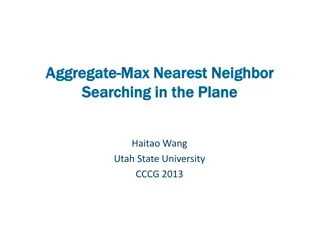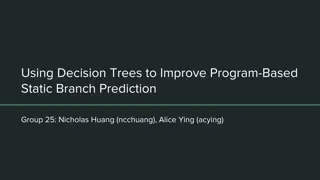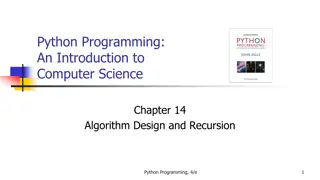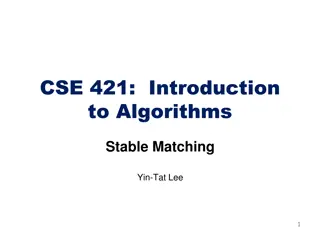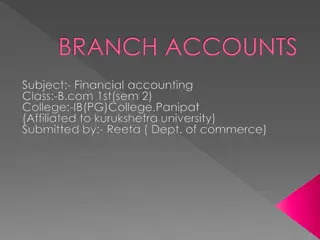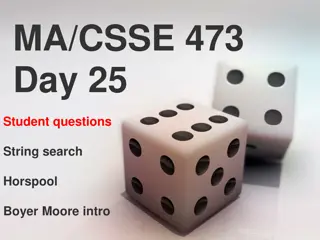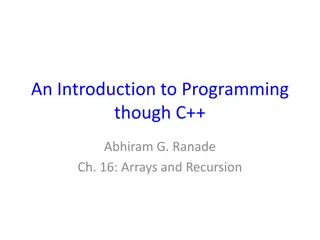Bara: Branch Agnostic Region Searching Algorithm
Build a control-flow graph (CFG) from demand accesses by forming coarse-grained regions and analyzing control flow. The algorithm focuses on prefetching candidates efficiently using a depth-limited depth-first search approach. It aims to reduce the complexity of CFG representation by deducing control flow between regions. The process involves calculating probabilities based on edge weights, scheduling prefetches, and implementing strategies to improve prefetch performance.
Download Presentation

Please find below an Image/Link to download the presentation.
The content on the website is provided AS IS for your information and personal use only. It may not be sold, licensed, or shared on other websites without obtaining consent from the author.If you encounter any issues during the download, it is possible that the publisher has removed the file from their server.
You are allowed to download the files provided on this website for personal or commercial use, subject to the condition that they are used lawfully. All files are the property of their respective owners.
The content on the website is provided AS IS for your information and personal use only. It may not be sold, licensed, or shared on other websites without obtaining consent from the author.
E N D
Presentation Transcript
Bara: Branch Agnostic Region Searching Algorithm Daniel A. Jim nez, Paul Gratz, Gino Chacon, and Nathan Gober Texas A&M University
Main Idea Build a control-flow graph (CFG) from demand accesses The nodes are coarse-grained regions formed from contiguous blocks The edges represent control flow in and out of regions Edges are weighted the frequency they were traversed in the demand stream CFG is represented in a BTB-like structure Find prefetch candidates by searching the CFG from the current demand access Search to a certain depth Search to a certain cumulative probability induced by the weights
Bara Stands for Branch Agnostic Region Searching Algorithm (Most) branches are ignored; control flow is deduced by going from one region to the next regardless of how that happened Having large regions instead of basic blocks reduces number of nodes in the CFG leading to more compact representation Bar a is the nickname of Barcelona s famous football club I had my sabbatical in BCN last year Would have meant a little more if ISCA had stayed in Valencia
Depth-Limited Depth First Search Search graph using a depth-limited depth-first search 4 hops deep, or up to 5 if there is a node with outdegree 1 Search is also limited by probability: When searching edges from a node, we compute the probability of each edge as its weight divided by the total weight of all edges leading from that node Multiply probabilities along a given path, stopping the search early if we go below a certain tuned threshold for that depth Search initiated at a demand fetch, cache fill, or return instruction As long as the current region hasn t been recently search already Prefetches are scheduled in priority order A few prefetches issued on each cycle, assuming our queue is not empty
Details and Tricks Each CFG node keeps a spatial pattern noting whether a given block within a region has ever been accessed We don t prefetch a block if it s never been accessed Keep a shadow cache to filter prefetches Also helps identify late prefetches; they re in our cache but not ChampSim s Compress region addresses in the CFG scheme similar to ITTAGE Returns are treated specially Only search down an edge traversed by a return if the target is in the RAS Would be nice queue We only issue the highest probability prefetches, but keep a queue of alternate prefetches to try if the prefetch queue happens to be empty (it often is)
Details and Tricks continued Tweaking edge weights Weights are intended to track probability a given edge is traversed But we can tweak them for benefit On a useless prefetch, decrement the weight for the responsible edge So this prefetch is less likely to be issued in the future On a useful prefetch, increment the weight So this prefetch is more likely to be issued in the future On a late prefetch, increment the weight Prefetches are scheduled by probability, so this bumps this prefetch s priority in the queue so it s issued earlier
Scalability A huge h/w budget doesn t really show the potential of multi-block regions in reducing CFG metadata. Gets 28.3% speedup with 111KB, 2 block regions Bar a does well at lower budgets E.g. 25% speedup at 33KB, with 10 block regions
Related Work It s a lot like BTB-directed prefetchers [Smith & Hsu 1992, Kaynak et al. 2015, Kumar et al. 2017,2018, etc.] It s a lot like a Markov prefetcher [Joseph & Grunwald 1999] Uses spatial patterns [Kumar & Wilkerson, 1998, Somyagi et al. 2009] Address compression from ITTAGE [Seznec 2011] Funny set-associative BTB matching multiple targets [Garza et al. 2019]
Future Work Bar a is one technique. It does well by itself It would do better hybridized with other techniques I dislike this approach because I cling to old-school notions of elegance Also, industry doesn t like your hybrid designs. They get in the way of clarity But elegance doesn t win optimization championships If I am unable to resist competing in the next championship like a moth to a flame I ll have to capitulate to hybridization
